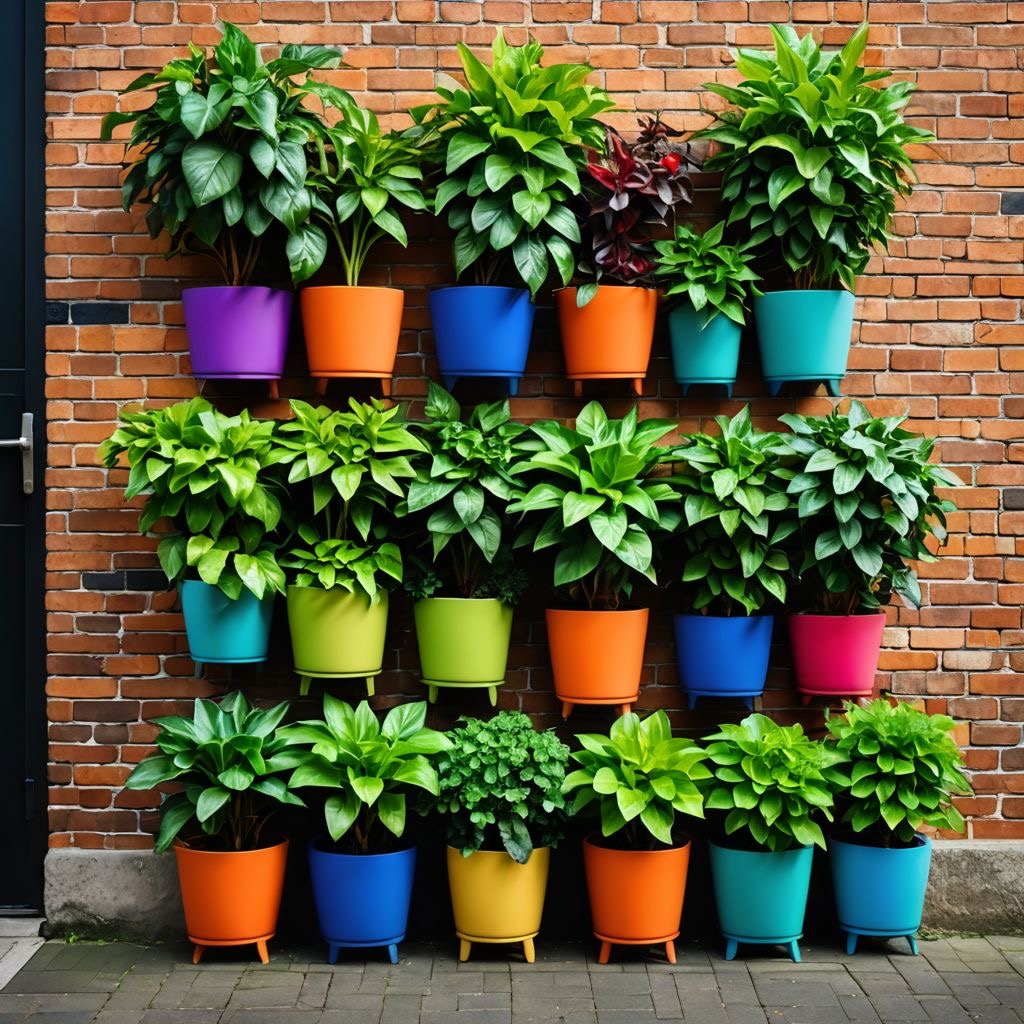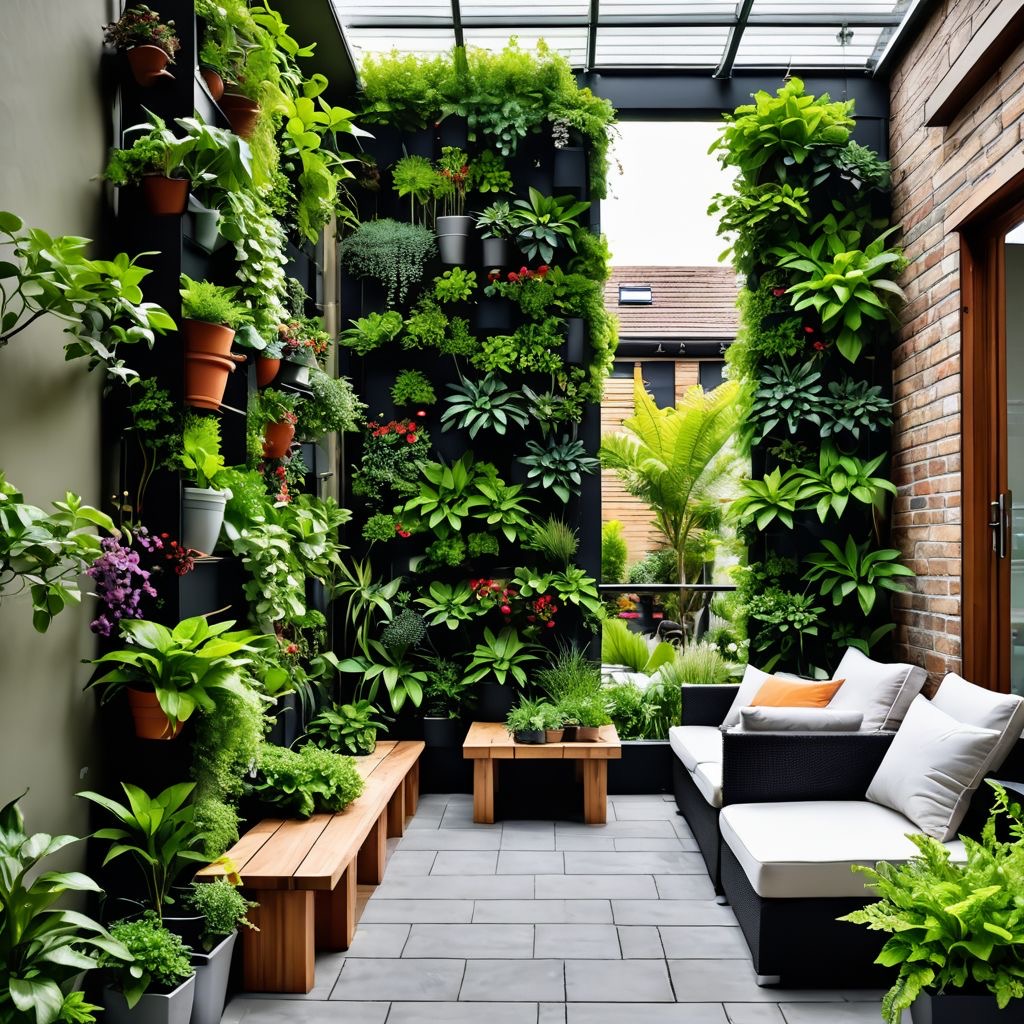
Table of Contents:
1. Introduction
2. Understanding Vertical Gardens
- 2.1 Defining Them
- 2.2 Their History
3. How They Are Different From Traditional Gardens
- 3.1 Space Utilization
- 3.2 Maintenance Differences
- 3.3 Aesthetic Considerations
4. How to Create a Vertical Garden
- 4.1 Planning Yours
- 4.2 Choosing the Right Location
- 4.3 Selecting Suitable Plants
- 4.4 Building the Structure
- 4.5 Maintenance Tips
5. Benefits
- 5.1 Space-Saving Advantage
- 5.2 Improved Air Quality
- 5.3 Aesthetic Enhancement
- 5.4 Accessibility
6. Popular Plants for Yours
- 6.1 Herbs and Vegetables
- 6.2 Flowers
- 6.3 Foliage Plants
7. Incorporating them into Your Home and Landscape Design
- 7.1 Integration with Other Garden Ideas
- 7.2 How They Fit in Urban Environments
8. Conclusion
Introduction:
If you’re a homeowner in Winnipeg with a passion for creative gardening or simply looking to add a touch of greenery to your abode, you've probably come across the concept of vertical gardens. These trending green spaces are not just a feast for the eyes; they are an innovative solution to space limitations while offering a multitude of benefits. Imagine transforming an empty wall into a vibrant patch of nature, where a brilliant rose garden or a luscious collection of herbs and vegetables could flourish.
Contact us today for your free estimate.

But what exactly is a vertical garden? Is it really different from those traditional vine and climbing plant gardens we often envision sprawling gloriously across trellises? Well, allow us to demystify this appealing gardening approach that has captured the hearts of many across the globe, including those who might be used to more conventional gardening methods.
Best vines and Climbers For Your Winipeg Garden Design
Contact us today for your free estimate.
In this comprehensive guide, we'll explore everything this style of garden offers—from their definitions and historical significance to how they can be constructed and maintained. We’ll delve deep into how these gardens differ from traditional setups, making a compelling case for why you might want to consider adding one to your home garden design. Not to mention, we’ll sprinkle in some practical tips and suggestions, along with a little humor, because who said gardening couldn’t be fun? So grab your gloves, your compost, and let’s dig into the world of vertical gardening!

2. Understanding Vertical Gardens:
2.1 Definition: These garden styles, often known as living walls or green walls, are unique gardening systems that allow plants to grow upward rather than outward. Imagine a vertical tapestry of greenery, where various species are planted in a structured format against a wall or frame, rather than on the ground. It's a fantastic way to maximize space, especially in urban settings where real estate—both for people and plants—is at a premium.
Contact us today for your free estimate.

These gardens can be created using various formats and arrangements—from stacked planters to hydroponic systems, allowing plants to thrive vertically. Many homeowners opt for these gardens to cultivate fresh herbs, flowers, or even vegetables in a refreshing and unique way. They can serve as vibrant backdrops to outdoor dining spaces or even work wonders indoors as eye-catching decor that contributes to your landscape design.
2.2 Their History
Believed to have roots tracing back to ancient civilizations, the concept of vertical gardening has evolved significantly over the ages. While plants were traditionally grown horizontally on the ground, innovative minds began exploring landscape design that took to new heights. The Hanging Gardens of Babylon, one of the Seven Wonders of the Ancient World, is a famous example of this style of gardening.

In modern times, the concept was pioneered by French botanist Patrick Blanc, who popularized the use of living walls in his landscape projects in the late 20th century. His technique employs a waterproof layer that supports a diverse range of plants in an environmentally friendly manner. As cities become more urbanized and green spaces dwindle, vertical gardens have gained newfound popularity as a means to incorporate lush greenery into daily life, connecting people with nature more conveniently.

3. How They Are Different From Traditional Gardens:
3.1 Space Utilization
One primary difference between this style of gardens and a traditional flower garden setup is their approach to space utilization. Traditional gardens typically spread out on the ground in patterns that might take up extensive horizontal space, requiring ample yards or plots of land to showcase beautiful flora. In contrast, vertical gardens ascend. They take full advantage of any vertical space available—think fence lines, walls, or even the sides of buildings. This is incredibly beneficial for Winnipeg homeowners who wish to create a home garden without sacrificing too much precious yard area.
Contact us today for your free estimate.

3.2 Maintenance Differences
When it comes to maintenance, traditional vines and climbing plants often need to be trained and guided up trellises or fences, which can be a meticulous process. Yet, while vertical gardens boast a unique aesthetic, they demand a different level of care. Adequate sunlight, watering, and drainage are crucial for these vertical structures, which may complicate maintenance tasks. However, the reward comes in the form of fresh herbs just a hand’s reach away or vibrant blooms staring back at you as you sip your morning coffee!

3.3 Aesthetic Considerations
While beauty is subjective, it’s safe to say that one of the most prominent differences lies in aesthetics. Vertical designs offer a layered depth and texture that traditional gardens simply cannot provide. With an array of trailing vines, colorful flowers, and lush foliage stacked against a wall, you instantly elevate your landscape. They can provide a stunning visual impact, potentially increasing your property value and appeal. In all honesty, while any flower bed design applied to a flat space can look lovely, there’s a unique charm to that green tapestry climbing up to greet the sun!

Reach out by call or text to: 204-229-9789 or click here to submit your information today to arrange a “no obligation” introductory phone call. We look forward to helping you transform your yard.
Tips on how to prepare for a consultation meeting with a landscape contractor
4. How to Create Yours:

4.1 Planning
Creating yours begins with solid planning. Homeowners need to assess their available space and decide what type of vertical garden they want—be it a botanical garden style with various species or a modest arrangement of herbs. Take a stroll through local gardening stores or browse websites for inspiration. Checking out one of the many landscaping companies Winnipeg homeowners have learned to trust for gardening expertise can also provide valuable insights and professional tips related to your local climate and soil conditions.
4.2 Choosing the Right Location
Successful requires the right location, much like ensuring your traditional flower bed design gets enough sunlight. Aim for a place that receives adequate light throughout the day. A south-facing wall is ideal for most plants, although shade-loving varieties can thrive in less sunny spots. Additionally, consider proximity to a water source, so watering is a breeze when needed.
4.3 Selecting Suitable Plants
When it comes to plant selection, the options are delightful! Perennial herbs like basil, thyme, and mint can be perfect, not just for your meals but also add fragrance to your outdoor space. If you’re looking for aesthetics, consider vibrant flowering plants like petunias or pansies. Also, think about climbers like clematis or even small strawberry plants for a playful twist! Don’t forget to condition your top soil and check for any soil amendments to ensure an optimal growing environment.
4.4 Building the Structure
Next, it’s time to create the structure for your vertical garden! This can be as straightforward as using planters attached to a wooden frame or arranging various pots on a vertical stand. Alternatively, you could go for a more sophisticated approach with a hydroponic system, perfect for busy gardeners who may forget to water regularly. A quick search for “landscapers near me” will surely yield nearby professionals who can assist in constructing the more complex setups.
4.5 Maintenance Tips
Once the garden is established, maintaining it is key. Regular watering is vital—especially for those less-than-ideal sunny days when plants might dry out faster than you think. Check for pests and diseases routinely. Healthy plants often beg for a little fertilizer, especially when growing seasons peak. You’ll want to reconsider your yard maintenance Winnipeg approaches and adapt your techniques to meet the needs of your vertical plants! Adding a drip irrigation system can provide consistent moisture without the hassle of manual watering.
Contact us today for your free estimate.
5. Benefits of Vertical Gardening:
5.1 Space-Saving Advantage
As previously mentioned, one of the significant benefits of vertical gardening is how it saves space. In a growing city like Winnipeg, homeowners with limited outdoor room can still cultivate herbs, produce, and flowers, turning vertical unused wall space into charming green spots.
5.2 Improved Air Quality
Not only do vertical gardens charm the eye; they can also enhance indoor air quality! Plants like ferns, sansevieria, and peace lilies actively filter toxins from the air. This leads to healthier living environments, both indoors and outdoors, while helping absorb CO2 during the process.
5.3 Aesthetic Enhancement
Let’s face it—who doesn’t want to beautify their living space? Vertical gardens elevate the look of any home or business landscape, appealing to both the eyes and the senses.
5.4 Accessibility
Vertical gardening puts your plants at your fingertips. Forget bending down or kneeling to get to the ground level! It’s especially beneficial for those with mobility issues, allowing greater accessibility to fresh produce and beautiful greenery. Just think of how convenient it would be to grab some fresh basil right from the wall while preparing your next gourmet meal!
6. Popular Plants for Vertical Gardens:

6.3 Foliage Plants
Foliage plants can add lush greenery and depth to vertical gardens. Consider plants like pothos, ferns, and philodendrons, which are not just visually pleasing but also hardy and forgiving, making them thrifty choices for those new to gardening.
7. Incorporating Vertical Gardens into Your Home and Landscape Design:
Contact us today for your free estimate.
7.1 Integration with Other Garden Ideas
Vertical gardens can enhance existing landscape designs effortlessly. Pair your vertical garden with a traditional rose garden or even a traditional flower bed design, accentuating your garden's beauty. Integrate them around patios or decks to create a refreshing setting where you can sit back and relax amidst nature.

7.2 Vertical Gardens in Urban Environments
For homeowners in Winnipeg, vertical gardens can be a boon in urban environments where horizontal space is scarce. They can beautify desolate walls in community areas or public spaces, showcasing vibrant greenery and a love for environmental sustainability. These living walls also play a role in reducing urban heat, contributing positively to the ecosystem.
Contact us today for your free estimate.


